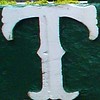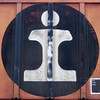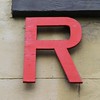What is real learning?
This was an important find today, The Experience Designer Network: How do we learn the things we value most? Resonating deep within me. It structures so many thoughts and feelings i have had into a coherent series of chapters laying out a much deeper vision of what education really means. What i loved about this discovery was the light it sheds on education as merely learning information, which is how most of us have experienced our years in school.
Also of note was the discovery of the work of Chris Corrigan and Michael Herman . They both have refined their facilitation practises with groups, .org and one-to-one, to using the four practices of Open Space.
1. practice of opening. it's about willingness. willingness to see, to know, to open. it's personal and reflective, but can be felt physically in body and charted in organizations.
2. practice of inviting. it's about goodness. finding benefits TO others, as in what's in it for them, and also benefits IN others, as in recognizing what they can add to the process of achieving what is desired personally in the first practice. it makes that first practice social, collective, organizational, and cultural, but also documented in invitation emails, letters, posters.
3. practice of holding. it's about supporting movement and change. providing space and time, structures that support without making decisions for people, giving attention, carrying in awareness or carrying forward, holding in one's heart or home or conference room. it creates room for others to expand, explore, experiment... to bring new things out in the world. it is simultaneously logistical, mental, and emotional.
4. practice of practicing. it's about sustaining, returning, realizing, and making real. this is action, taking a stand, making progress, going somewhere, documenting results. this implies the continuation and diffusion of the above. standing ground, staying the course, seeing things through. it is the personal and individual (I, me, my) pursuit of the good that WE invite, in the space that WE provide. It can look simply mechanical and become deeply meditative, as we go round again, starting with Opening. (note... this might also be called the practice of 'participating,' perhaps 'making,' or simply 'doing' or 'changing.' stay tuned"
2. practice of inviting. it's about goodness. finding benefits TO others, as in what's in it for them, and also benefits IN others, as in recognizing what they can add to the process of achieving what is desired personally in the first practice. it makes that first practice social, collective, organizational, and cultural, but also documented in invitation emails, letters, posters.
3. practice of holding. it's about supporting movement and change. providing space and time, structures that support without making decisions for people, giving attention, carrying in awareness or carrying forward, holding in one's heart or home or conference room. it creates room for others to expand, explore, experiment... to bring new things out in the world. it is simultaneously logistical, mental, and emotional.
4. practice of practicing. it's about sustaining, returning, realizing, and making real. this is action, taking a stand, making progress, going somewhere, documenting results. this implies the continuation and diffusion of the above. standing ground, staying the course, seeing things through. it is the personal and individual (I, me, my) pursuit of the good that WE invite, in the space that WE provide. It can look simply mechanical and become deeply meditative, as we go round again, starting with Opening. (note... this might also be called the practice of 'participating,' perhaps 'making,' or simply 'doing' or 'changing.' stay tuned"
I use parts of this intuitively in how i work with people so this scheme is useful to reflect on my own patterns. Very cool.














































